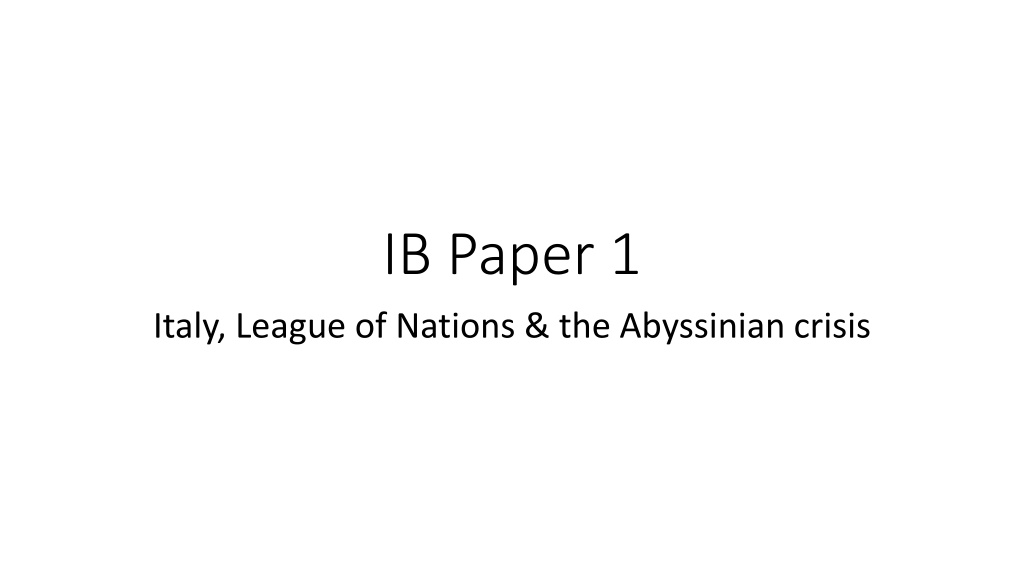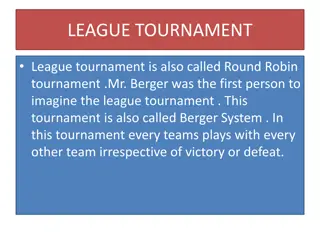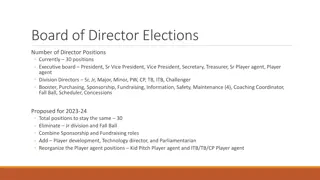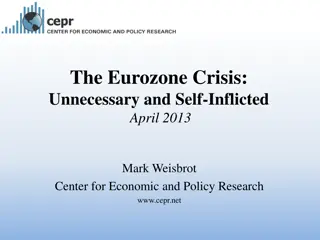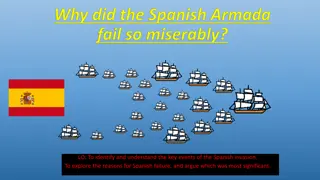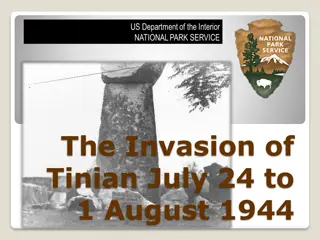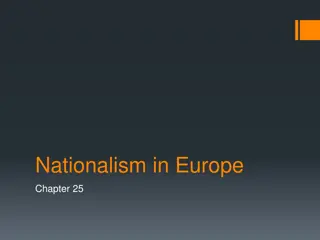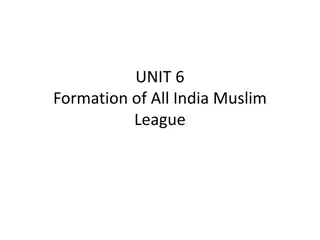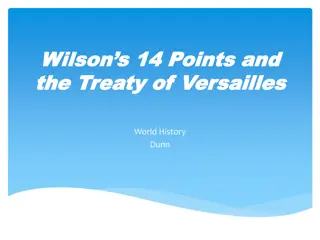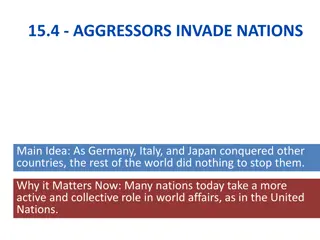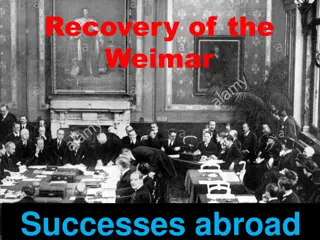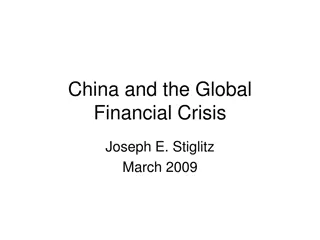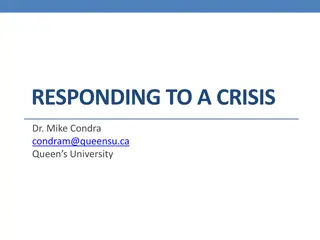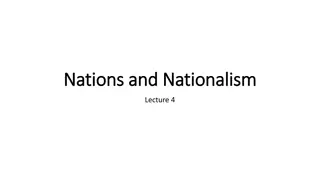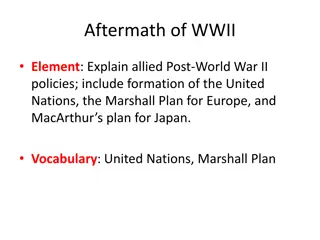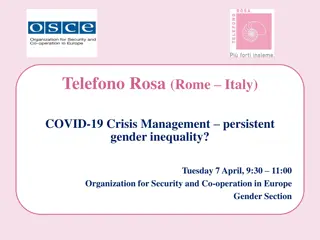Abyssinian Crisis: Italy, League of Nations, and the Invasion of Abyssinia
The Abyssinian crisis of the 1930s was sparked by the Wal-Wal Incident, leading to the Italian invasion of Abyssinia. Mussolini's aims in invading Abyssinia included territorial expansion and revenge. Despite diplomatic efforts, the invasion occurred with Mussolini believing that the UK and France would not intervene due to their own interests. The crisis had significant implications for colonial powers and the League of Nations.
Uploaded on Oct 01, 2024 | 0 Views
Download Presentation

Please find below an Image/Link to download the presentation.
The content on the website is provided AS IS for your information and personal use only. It may not be sold, licensed, or shared on other websites without obtaining consent from the author. Download presentation by click this link. If you encounter any issues during the download, it is possible that the publisher has removed the file from their server.
E N D
Presentation Transcript
IB Paper 1 Italy, League of Nations & the Abyssinian crisis
Abyssinia in 1930s http://www.bbc.co.uk/staticarchive/3279af743d53009c0a77a8653ea1109b35a3cff2.jpg
Abyssinian invasion on the map http://socialexperts.weebly.com/uploads/2/3/0/8/2308419/2309605.jpg
Origins of Abyssinian crisis Origins of Abyssinian crisis Wal Dec 1934 Dec 1934 Wal- -Wal Wal incident incident On the 5thDecember 1934, the Wal-Wal Incident took place which laid the foundations for the Abyssinia Crisis. A skirmish between a Somali garrison in the service of Italy, and Ethiopian troops who sought the withdrawal of Italian forces from the area, resulted in over 150 deaths and a diplomatic crisis that ended in the Italian invasion of Abyssinia the following year. A 1928 treaty had agreed the boundary between Italian Somaliland and Ethiopia. However, in 1930 Italy built a fort at the Wal-Wal oasis that was approximately 50 miles inside the Abyssinian side of the border and so contravened the agreement. At first the Italian presence was tolerated by the Abyssinians with their only response being an increase in their military personnel in the area. However, in November 1934 a force of approximately 1000 Abyssinian soldiers arrived at the fort and demanded it be handed over: this demand was refused by the garrison s commander. The following day, a group of British and Abyssinian surveyors arrived at the fort and found themselves caught up in the dispute. The British withdrew in order to avoid any bloodshed, but the Abyssinians stayed and joined their countrymen in a face-off with the garrison. Although the exact cause of the skirmish that began on the 5thDecember is unclear, it s generally accepted that neither side tried particularly hard to avoid it. Despite this, both sides protested the actions of the other. While Abyssinia went to the League of Nations, Italy outright demanded compensation. The diplomatic crisis that ensued eventually led to the Italian invasion of Abyssinia in October 1935.
Mussolinis aims in invading Abysinnia To link up Italy's existing colonies in North-East Africa (Eritrea and Italian Somaliland). To gain revenge for the Italian defeat at Adowa (1896). To satisfy the Italian nationalists who had been angry at Italy's failure to acquire colonial rights in the 1919-20 Peace Settlement. To be able to claim to be recreating the glories of the ancient Roman Empire in North Africa.
Mussolini thought that UK & France would not mind Because, Pierre Laval, French Foreign Minister, had in January 1935 said that France had no interests in Abyssinia. In June 1935, Anthony Eden, British Foreign secretary had visited Rome and proposed a deal between Abyssinia and Italy, which would give Italy the Ogden region, in exchange for Abyssinia receiving some of British Somaliland, and access to the sea. The Stresa Front (1935) - Mussolini knew that France/Britain would not want to jeopardise losing an Ally to the Nazis.
Italian invasion In October 1935, Italy marched troops, tanks and planes into Abyssinia from Eritrea in the North. Before the invasion, Emperor Haile Selassie had appealed 4 times to the League of Nations for help, but he was ignored.
League of Nations reaction October 1935, both the League Council and the Assembly condemned Italy's invasion, 50/54 members voted in favour of economic sanctions: - Banned the sale to Italy of: arms, rubber, and certain metals. - Loans to Italy and the importing of Italian goods were also banned.
Why did sanctions fail? Not introduced for 6 weeks after Mussolini invaded (18th November 1935). Did not include the materials Mussolini wanted - oil, iron, steel and coal. Britain and France were worried that if they pressured Mussolini too much, he would go and join the Nazis. Non LoN countries (USA, Germany and Japan) traded anyway. Took too much time to come into effect, not until early 1936 did Italy even notice.
Hoare-Laval Pact Dec 1935 December 1935, Sir Samuel Hoare (Britain) and Pierre Laval (France) reached a secret agreement in Paris that about two-thirds of Abyssinia could be offered to Italy in exchange for land from elsewhere. This was leaked however, and the French-British outcry led to both politicians being sacked.
Results Italy took Abyssinia. LoN shown to be weak. Hitler re-occupied Rhineland & Stresa Front (1935) fell apart. Mussolini and Hitler formed an alliance; in October 1936 the Rome- Berlin Axis was signed. Friendship and trade. Mussolini withdrew Italy from LofN.
